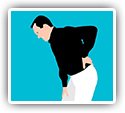Resolution of Atrial Fibrillation Under Chiropractic Care A Case Study

The Annals of Vertebral Subluxation Research published the results of a case study on May 20, 2024, documenting the complete resolution of long-term persistent atrial fibrillation in a patient receiving chiropractic care.
According to the National Heart, Lung, and Blood Institute, an NIH official website of the United States government, "atrial fibrillation is a type of arrhythmia, or irregular heartbeat." They continue by explaining, "Long-term persistent atrial fibrillation occurs when abnormal heart rhythms last for more than a year without getting better."
This study's authors begin by emphasizing the dangers of atrial fibrillation, aka. AFib, by stating, "Atrial fibrillation can be episodic or persistent, and it has dangerous complications if not managed appropriately." They continue, "Atrial fibrillation is the most common type of cardiac arrhythmia. This condition is marked by irregular heartbeat, heart palpitations, lightheadedness, fatigue, dyspnea, and chest pain." They also report that AFib increases a person's risk for stroke by four to five times, and that a stroke from AFib is often more severe.
In this case, a 64-year-old man, who was a preacher, presented himself for chiropractic care. His entered with a diagnosis of atrial fibrillation and right elbow pain. He explained that his AFib had been long-standing as he had been suffering with symptoms from the condition since he was 16 years of age.
The man reported that when he was younger, he would occasionally become very dizzy and feel strong palpitations if he physically exerted himself or was subjected to sudden emotional or physical stress. His problems prevented him from participation in sports. As his condition progressed, the man would have attacks weekly causing him to feel extremely weak. During these attacks, he would also suffer with severe tachycardia and his heart rate would elevate to as high as 400 beats per minute.
His AFib attacks regularly continued throughout the man's entire adult life and lasted anywhere from 20 minutes up to 7 hours. He eventually sought medical care where his MD gave him a variety of medications. The man reported that the medications many times would either aggravate his symptoms or that they would do nothing to help him. Over time, the man discontinued all his medications as he felt they were not helping him. His condition was severe enough that he had been hospitalized multiple times.
The man initially decided to go to the chiropractor because of the occasional elbow pain and back pain that he was having. He was also curious to see if chiropractic could do anything to help with the life-long symptoms of AFib he was suffering with.
After a full chiropractic examination, it was determined that the man had multiple vertebral subluxations. A specific care plan of chiropractic adjustments was started with the man being seen initially twice per week.
The results of care were nothing short of life changing. After his initial chiropractic adjustment, the man experienced complete remission of all symptoms and signs of his AFib. He stated that he was completely free of fatigue, chest pain, palpitations, dizziness, and shortness of breath. After his tenth visit, the man had still not experienced any attacks, symptoms or issues with AFib. Over the course of the next year, he reported only having one minor AFib episode.


